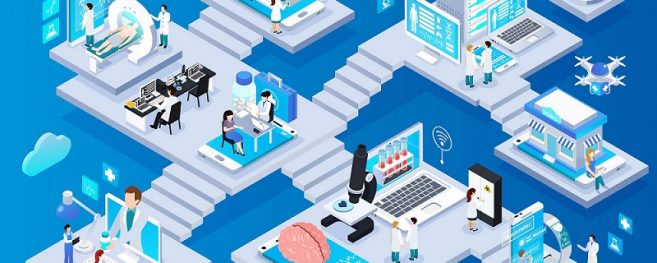The Impact of Technology in the Healthcare Industry

The healthcare industry is known for being somewhat slow to adapt new technologies, but this reputation is simply untrue. Healthcare has actually taken on some new technologies much earlier than other, larger industries have. And these technological advances have made great strides in the fields of healthcare and medicine.
In this article, we’re going to discuss some of the more impressive impacts of technology in healthcare.
Examples of Technological Advances in Healthcare
Digitization of health records
When computers were first introduced, one of the first things that people considered was to digitize health records for the entire healthcare industry. Of course, health record digitization came about very slowly due to HIPAA regulations, the cost of installation and training, and computer security requirements.
However, most peoples’ health records in the USA are digitized and are accessible with the click of a button. Now, we have patient portal systems that hospitals and practices can use to allow their patients to access their own medical records, securely, from the comfort of their own home!
Robotics
Where robotics has really shined in recent years is surgery. Now, some surgeons are currently utilizing robotic technologies combined with laparoscopy in order to perform surgery with a precision never seen before. This increased precision can help reduce recovery times, lower procedure costs, and make some procedures much more accessible.
Artificial Intelligence and Virtual Reality
These are still in their infancy when it comes to healthcare. However, the potential is astounding for both of these technologies.
Artificial intelligence and the use of machine learning have allowed for amazing advances in the field of cancer detection, among others. Virtual reality has the potential to transform several aspects of healthcare and medicine, including mental health, restoring sense perceptions in those who have lost them, providing effective telehealth, and much more.
Make your processes more efficient.
As you grow, bottlenecks in your operation will be exposed. Investing inefficiencies early will help you scale up effectively and will allow you to take on larger patient loads early on. You want to make sure that your administrators, nurses, physicians, and other staff are able to do their jobs effectively. Invest in technology to make it easy for your staff to access medical records, input charts, access lab results, and communicate with other practices for patient referrals.
How Technology Has Changed Healthcare
Increased efficiencies
It’s no secret that healthcare has always been noted for its inefficiencies. But thanks to technology, many of these inefficiencies have either gone away or improved significantly.
Insurance claims are processed much faster. Physicians have much easier access to reference tools and the latest scientific literature. Prescriptions can be filed nearly immediately, with the medicine available for pickup almost as soon as the patient can arrive at the pharmacy.
The computerization of healthcare has also made administrative jobs much more efficient as well. Although there’s still a long way to go, accessing files and information is so much quicker and has resulted in time and money savings on the order of millions of hours and billions of dollars.
Improved communication
Communication, particularly between medical practices, has become a lot better. In the past, if a physician wanted to refer a patient or get help, they’d have to call the other physician’s back line. Now, physicians can communicate securely with automatic logs of their conversations for easier reference. They can also make use of telehealth activities and an active patient portal.
Easier access to medical records
Although some electronic medical record (EMR) software is difficult to use and can cause problems and frustrations, it’s obvious that it’s much easier for patients and other physicians to get access to medical records when they need them.
These medical records have also become more comprehensive, reducing the need to hunt down charts and test results.





